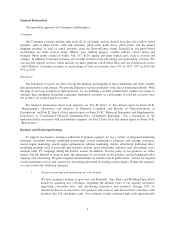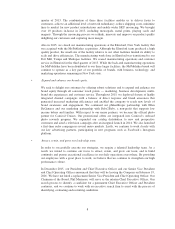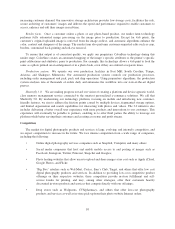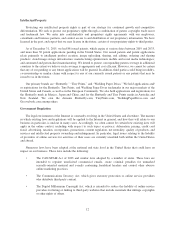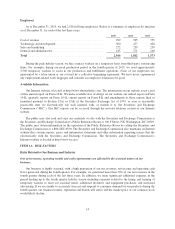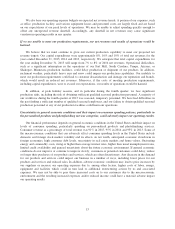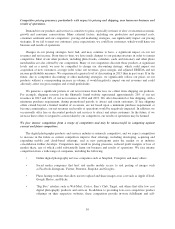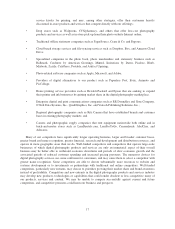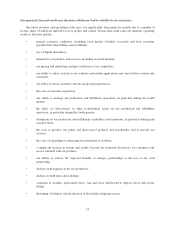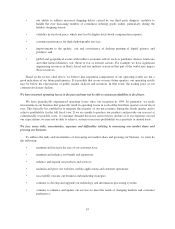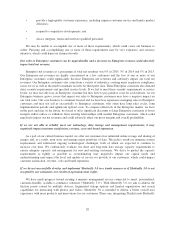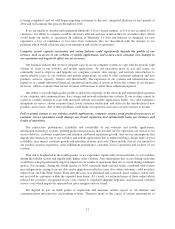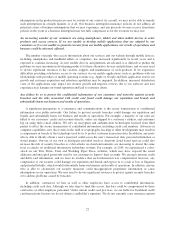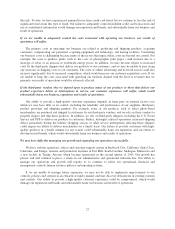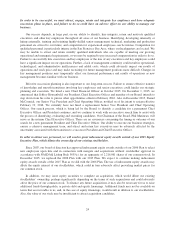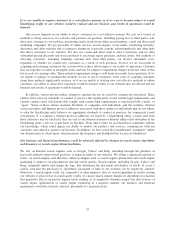Shutterfly 2015 Annual Report Download - page 17
Download and view the complete annual report
Please find page 17 of the 2015 Shutterfly annual report below. You can navigate through the pages in the report by either clicking on the pages listed below, or by using the keyword search tool below to find specific information within the annual report.We also base our operating expense budgets on expected net revenue trends. A portion of our expenses, such
as office, production facility, and various equipment leases and personnel costs, are largely fixed and are based
on our expectations of our peak levels of operations. We may be unable to adjust spending quickly enough to
offset any unexpected revenue shortfall. Accordingly, any shortfall in net revenues may cause significant
variation in operating results in any quarter.
If we are unable to meet our production requirements, our net revenues and results of operations would be
harmed.
We believe that we must continue to grow our current production capability to meet our projected net
revenue targets. Our capital expenditures were approximately 8%, 10% and 10% of total net revenues for the
years ended December 31, 2015, 2014 and 2013, respectively. We anticipate that total capital expenditures for
the year ending December 31, 2015 will range from 7% to 8% of 2016 net revenues. Operational difficulties,
such as a significant interruption in the operations of our Fort Mill, South Carolina; Tempe, Arizona; or
Shakopee, Minnesota production facilities, could delay production or shipment of our products. In addition,
inclement weather, particularly heavy rain and snow could impair our production capabilities. Our inability to
meet our production requirements could lead to customer dissatisfaction and damage our reputation and brands,
which would result in reduced net revenues. Moreover, if the costs of meeting production requirements,
including capital expenditures, were to exceed our expectations, our results of operations would be harmed.
In addition, at peak holiday seasons, and in particular during the fourth quarter, we face significant
production risks, including the risk of obtaining sufficient qualified seasonal production personnel. A majority of
our workforce during the fourth quarter of 2015 was seasonal, temporary personnel. We have had difficulties in
the past finding a sufficient number of qualified seasonal employees, and our failure to obtain qualified seasonal
production personnel at any of our production facilities could harm our operations.
Uncertainties in general economic conditions and their impact on consumer spending patterns, particularly in
the personalized products and photofinishing services categories, could adversely impact our operating results.
Our financial performance depends on general economic conditions in the United States and their impact on
levels of consumer spending, particularly spending on personalized products and photofinishing services.
Consumer revenue as a percentage of total revenue was 91% in 2015, 95% in 2014 and 95% in 2013. Some of
the macroeconomic conditions that can adversely affect consumer spending levels in the United States include
domestic and foreign stock market volatility and its effects on net worth, anticipated economic slowdowns in
foreign economies, high consumer debt levels, uncertainty in real estate markets and home values, fluctuating
energy and commodity costs, rising or higher than average interest rates, higher than usual unemployment rates,
limited credit availability and general uncertainty about the future economic environment. If general economic
conditions do not improve or continue to improve slowly, customers or potential customers could delay, reduce
or forego their purchases of our products and services, which are often discretionary. Any decrease in the demand
for our products and services could impact our business in a number of ways, including lower prices for our
products and services and reduced sales. In addition, adverse economic conditions may lead to price increases by
our suppliers or increase our operating expenses due to, among other factors, higher costs of labor, energy,
equipment and facilities which could in turn lead to additional restructuring actions by us and associated
expenses. We may not be able to pass these increased costs on to our customers due to the macroeconomic
environment and the resulting increased expenses and/or reduced income could have a material adverse impact
our operating results.
15


